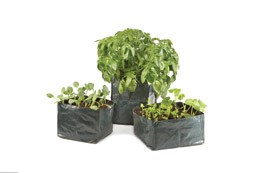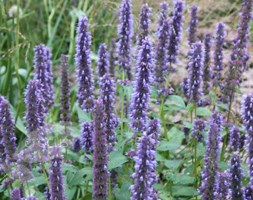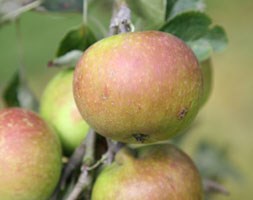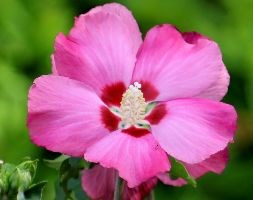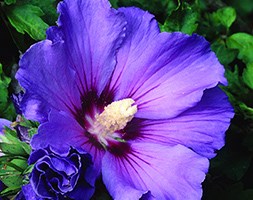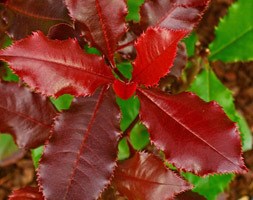Price reductions at Crocus
by Sarah - February 14th, 2014.Filed under: Crocus, Price Reductions.
Crocus reduced the price on these lines today
Twin pack mixed veg grow bags was £9.99 now £4.99
These pack of mixed vegetable grow bags are perfect for growing your favourite vegetables no matter what space you have in the garden. Made from heavy duty reusable material and complete with drainage holes mean you can keep using them season after season. Measurements: Small: Height 25cm – Diameter 45cm Medium: Height 35cm – Diameter 35cm Large: Height 45cm – Diameter 40cm
Agastache ‘Blue Fortune’ (Mexican giant hyssop) was £8.99 now £7.99
Position: full sun Soil: well-drained, fertile soil Rate of growth: average Flowering period: July to October Hardiness: hardy (borderline) Hyssops are great for adding vertical accents to a border, with whorls of long-lasting, tiny flowers arranged like a bottlebrush and pointed, aromatic fresh green leaves that are attractive to butterflies and bees. They are short-lived though, and may need replacing every few years, especially after a cold or wet winter. Blue Fortune has loose spires of lilac-blue flowers from July to October and peppermint-scented leaves. This upright, bushy perennial is perfect for the middle of a sheltered, sunny border. Try it as part of a Mediterranean scheme, with grey-leaved plants, or among ornamental grasses. Garden care: Don’t cut back the faded flower-stems in until early spring, as they provide interest in the winter months. Lift and divide congested colonies in spring.
Pieris japonica ‘Mountain Fire’ (lily-of-the-valley shrub) was £12.99 now £9.99
Position: full sun or partial shade Soil: fertile, humus-rich, moist, well-drained acid soil or ericaceous compost Rate of growth: slow-growing Flowering period: April and May Hardiness: fully hardy Glossy, brilliant red young leaves mature to chestnut brown and in late spring, clusters of pretty, ivory, nodding, bell-like flowers appear, resembling lily-o f-the-valley. The fiery red young foliage of this rounded, evergreen shrub will add a splash of vivid colour to a shady border or woodland edge. Pieris needs a moist, well-drained acid soil and shade from morning sun. Garden care: Add composted pine needles or peat when planting. Apply a generous 5-7cm (2-3in) mulch of composted pine needles or peat each year around the base of the plant in early spring. Remove the faded flower-heads in late spring along with any frost-damaged foliage.
apple ‘Cox’s Orange Pippin’ (apple) was £14.99 now £11.99
Position: full sun Soil: fertile, well-drained soil Rate of growth: average to fast-growing Ultimate size (M26): 2.7×2.7m (9x9ft) Flowering period: April and May Flower colour: white Other features: first class, juicy, dessert apples (early to mid-October) Hardiness: frost hardy (may need winter protection, particularly in colder parts of the country) Pollination Group: Partially self fertile – but for a bumper crop use a apple from group C – flowering mid season This upright, spreading tree is covered in pure white, cup-shaped flowers in mid- and late spring, followed by first class, juicy dessert apples for harvesting in early to mid-October. A moderately vigorous variety producing arguably the best British eating apple, it prefers a sheltered spot so is not best suited to colder parts of the country. Garden care: Keep the base of the tree weed free, fertilise at the beginning of each year and water regularly during hot, dry spells. Remove damaged or crossing branches during the dormant season Pollination Information: This apple belongs to pollination group C, so you will need to plant one other different variety of apple to guarantee cross pollination, and a subsequent bumper crop. Ideally this should come from the same pollination group, however it is possible to use one from group B or D as well.
Hibiscus syriacus ‘Woodbridge’ (tree hollyhock) was £12.99 now £11.99
Position: full sun Soil: humus-rich, moist but well-drained, neutral to slightly alkaline soil Rate of growth: average to fast-growing Flowering period: August to October Hardiness: fully hardy A late flowering shrub that comes into its own when others are looking tired, th is has large, trumpet-shaped, deep pink flowers 8cm (3in) across with red cent res from late summer to mid-autumn. The leaves are pretty too, three lobed, dar k green and very distinctive. This deciduous shrub has an exotic feel to it, bu t is just at home in a herbaceous border as it is in a tropical-style garden. I t is best planted in a sunny spot as it does need a long, hot summer to flower w ell. It has one limitation – the new foliage doesn’t appear until late spring. Garden care: To encourage a bushy habit prune young plants hard in late spring. After pruning apply a generous 5-7cm mulch of well-rotted gard en compost or manure around the base of the plant. Little or no pruning is need ed when established except to remove dead or diseased branches in late winter or early spring. In colder areas, shrubs might need a winter mulch.
Hibiscus syriacus ‘Oiseau Bleu’ (tree hollyhock (syn. Blue Bird )) was £12.99 now £11.99
Position: full sun Soil: humus-rich, moist but well-drained, neutral to slightly alkaline soil Rate of growth: average to fast-growing Flowering period: August to October Hardiness: fully hardy A late flowering shrub that comes into its own when others are looking tired, th is has large, trumpet-shaped, bright blue flowers 8cm (3in) across with red cent res from late summer to mid-autumn. The leaves are pretty too, three lobed, dar k green and very distinctive. This deciduous shrub has an exotic feel to it, bu t is just at home in a herbaceous border as it is in a tropical-style garden. I t is best planted in a sunny spot as it does need a long, hot summer to flower w ell. It has one limitation – the new foliage doesn’t appear until late spring. Garden care: To encourage a bushy habit prune young plants hard in late spring. After pruning apply a generous 5-7cm mulch of well-rotted gard en compost or manure around the base of the plant. Little or no pruning is need ed when established except to remove dead or diseased branches in late winter or early spring. In colder areas, shrubs might need a winter mulch.
Hydrangea paniculata Vanille Fraise (‘Renhy’) (PBR) (hydrangea) was £17.99 now £12.99
Position: full sun or partial shade Soil: moist, well-drained, moderately fertile, humus-rich soil Rate of growth: fast-growing Flowering period: June to August Flower colour: white and pink Hardiness: fully hardy A welcome addition from French breeders, this plant is already an award winner. Loose pyramid-shaped clusters of flowers form at the tips of red-stemmed branches in summer. They emerge creamy-white and turn shades of pink as they age, before finally taking on rich red and russet tones. Perfect for adding late summer colour to the shrub border, or for creating an informal, flowering hedge. Garden care:To enhance flowering prune hard in early spring, cutting back the previous season’s shoots to within a few buds of the permanent, woody framework of the plant.
Photinia Magical Vulcano (‘Kolmavoca’) (PBR) (photinia) was £14.99 now £12.99
Position: full sun or partial shade Soil: any fertile, well-drained neutral to alkaline soil Rate of growth: average to fast growing Flowering period: April and May Flower colour: white Other features: spherical, red fruit Hardiness: frost hardy (may need winter protection) Newly introduced, this is one of the plants our buyers discovered in Holland on one of their recent buying trips. Like other photinias, the new foliage emerges with a red flush, but the colour of ‘Vulcano’ is much more intense and is held longer than any of the others. It will make a fine addition to the shrub border, and can be used for hedging and screening too. Garden care: To encourage a profusion of bright young leaves in late-spring or summer shorten the stems of established specimens by up to 15cm (6in), to just above an outward-facing bud. Apply a generous 5-7cm (2-3in) mulch of well-rotted garden compost or manure around the base of the plant in early spring.
Lavandula angustifolia ‘mini stem standard’ (lavender mini-standard) was £24.99 now £19.99
Shown with gift wrap suggestion. The ceramic pot is not included with the plant. see goes well with below for a link to the pot used. Gift wrap is available during the checkout as a option Position: full sun Soil: moderately fertile, well-drained soil Rate of growth: average Flowering period: July to September Hardiness: fully hardy Lavenders are universally loved. They have aromatic foliage, that will release its delicious scent each time it is brushed against and rich purple, summer flowerspikes that attract bees, look good in both fresh and dried arrangements and make excellent additions to pot pourri. It is growing in a 3 litre pot and trained as mini-standard. They will look great when potted up and placed on a sunny patio. Garden care: Cut back the stalks after the flowers have faded. Carefully trim back in April, taking care not to cut into old wood.







